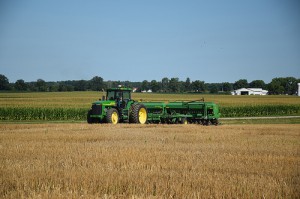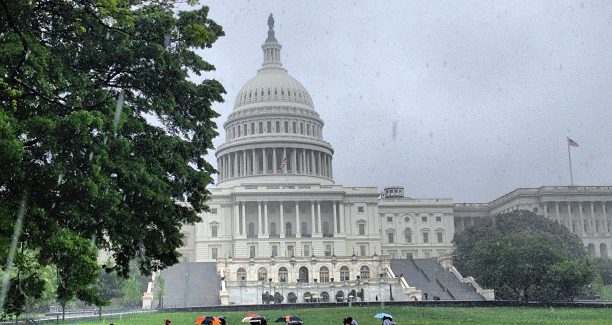
Four types of cover crops, including annual rye, oilseed radish, crimson clover and rapeseed, are being seeded into wheat stubble. Photo by Dianne Johnson, NRCS
On Sept. 3, the U.S. Environmental Protection Agency announced that the Great Lakes Restoration Initiative (GLRI) will provide almost $12 million to federal and state agencies to target harmful algal blooms (HABs) in western Lake Erie. The funding builds upon the GLRI’s ongoing efforts to reduce algal blooms and will be made available to Ohio, Michigan, and Indiana state agencies as well as to the U.S. Geological Survey, the U.S. Department of Agriculture (USDA), Natural Resources Conservation Service, and the National Oceanic and Atmospheric Administration.
The funding will be used to expand monitoring and forecasting to help drinking water treatment plant operators and beach managers minimize health impacts associated with HABs. It also will increase incentives for farmers in western Lake Erie watersheds to reduce phosphorus runoff that contributes to HABs, and funds will be used to improve measurement of phosphorus loads in Lake Erie tributaries.
Farmers also took full advantage of funding announced by the USDA in late August to incorporate cover crops. The funding was part of a special Environmental Quality Incentives Program offering following the Toledo drinking water crisis, and farmers had only one week to apply for the grants. The agency set aside about $2 million for this initiative to pay for 14,164 ha (35,000 ac) of cover crops in the basin. However, Ohio received applications for 34,803 ha (86,000 ac) requesting $5 million. Read more.
University of Washington oceanographers have created a tool to help predict when harmful algae might strike Washington and Oregon beaches. A few days’ warning could prevent last-minute beach closures or shellfish harvest losses, and reduce the risk of eating contaminated seafood. Read more.




